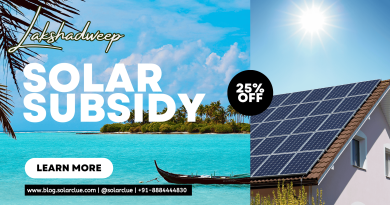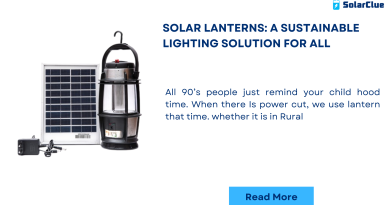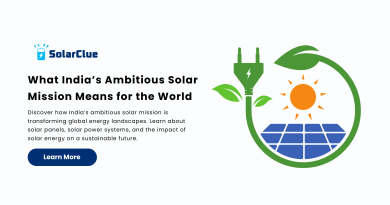Why Are Solar Panels Not Placed On A Tower
Table of Contents Solar power is rapidly emerging as a preferred alternative to traditional energy sources due to its renewability and significantly lesser environmental impact. One of the most common ways to harvest solar energy is through the use of photovoltaic (PV) solar panels. These panels are typically installed on rooftops or large open areas. Some may wonder why these panels are not placed on towers as it would seemingly catch more sunlight. This article outlines various reasons that contribute to why solar panels are not usually stationed on towers. One of the primary reasons why solar panels are not installed on towers is related to the role of solar angles in maximizing the efficiency of solar energy collection. Panels are generally designed to directly face the sun for the maximum amount of time during the day. The ideal angle for solar panels would be equal to the latitude of the location, and they should face true south in the northern hemisphere and true north in the southern hemisphere. Placing them on a tower would significantly reduce their exposure to direct sunlight, diminishing their efficiency of solar energy generation. Moreover, another factor dissuading the use of towers for solar panels is the structural and safety issues it poses. Towers are constantly exposed to wind loads, which could potentially damage the panels, especially during extreme weather conditions. To withstand the ongoing pressure, the panel frames and the tower structure would have to be made robust, leading to a significant increase in installation costs. In addition, maintenance and repair of panels placed at such heights would be challenging, dangerous, and expensive as it would often require specialized equipment and trained personnel. The feasibility of solar energy projects heavily relies on their cost-effectiveness. Comparatively, installing solar panels on a ground or roof is much more affordable than on a tower. The additional cost of constructing a strong tower, robust solar panel frames, plus the expense of maintaining and repairing panels at such a height will drastically increase the overall cost of the project. Considering their efficiency would, in fact, decrease due to the lesser exposure to direct sunlight, it is unsurprisingly more economical to install panels on the ground or roofs rather than on towers. Instead of investing resources in placing solar panels on a tower, the focus of research and development in solar energy harvesting is towards enhancing the efficiency and reducing the cost of solar panels. New technologies like bifacial solar panels and solar trackers that can harvest more energy are being pursued. Bifacial solar panels can generate power from both sides significantly increasing their output, whereas solar trackers are designed to follow the sun’s path across the sky, optimizing the amount of sunlight panels receive throughout the day. While photovoltaic solar panels aren’t typically placed on towers, the concept of a solar tower is popular in concentrated solar power (CSP). This system uses mirrors or lenses to focus a large area of sunlight onto a small area. The heat is used to produce steam that drives a turbine connected to an electricity generator. However, CSP technology is fundamentally different from the commonly used photovoltaic technology and is implemented on a larger scale usually for utility-scale solar power plants. While the idea of installing solar panels on towers might seemingly indicate an increase in energy production, in reality, several factors make this a less feasible strategy. The angle of the sun, structural and safety concerns, and considerations around cost-effectiveness all contribute to the decision not to mount solar panels on towers. Instead, the focus remains on optimizing efficiency and affordability through advancements in photovoltaic technology and installation practices, which are set to revolutionize the way we tap into the sun’s endless power.Introduction
The Role of Solar Angles
Structural Challenges and Safety Concerns
Cost-Effectiveness
The Developments in Solar Energy Harvesting
The Use of Solar Towers
Conclusion



